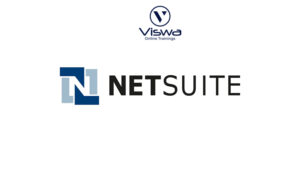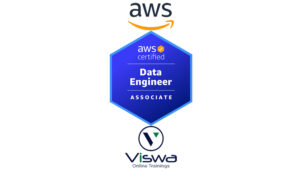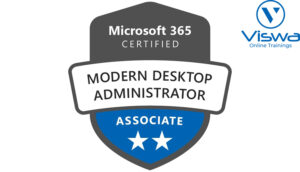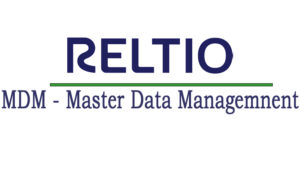Teradata Certification Training
One of the top providers of online IT training worldwide is VISWA Online Trainings. To assist beginners and working professionals in achieving their career objectives and taking advantage of our best services, We provide a wide range of courses and online training.
Learners : 1080
Duration : 25 Days
About Course
Our Teradata training consists of project work and lab exercises using the different Teradata components. Teradata is a business intelligence platform used to turn data into knowledge. The topics covered in this course include best practises for designing an elementary user interface. The Teradata Designer course emphasizes Teradata applications, working with scripts, best practices, importing data, and deploying Teradata applications. It also covers objects like sheets, list boxes, and charts. Enroll today to earn your certification.
Teradata Training Course Syllabus
✔ List the major architectural components of Oracle DBA
✔ Explain the memory structures
✔ Describe the background processes
✔ Understanding 12c multitenant architecture
✔ Exploring CDB and PDB databases
✔ List the major architectural components of Oracle DBA
✔ Explain the memory structures
✔ Describe the background processes
✔ Understanding 12c multitenant architecture
✔ Exploring CDB and PDB databases
✔ List the major architectural components of Oracle DBA
✔ Explain the memory structures
✔ Describe the background processes
✔ Understanding 12c multitenant architecture
✔ Exploring CDB and PDB databases
✔ List the major architectural components of Oracle DBA
✔ Explain the memory structures
✔ Describe the background processes
✔ Understanding 12c multitenant architecture
✔ Exploring CDB and PDB databases
✔ List the major architectural components of Oracle DBA
✔ Explain the memory structures
✔ Describe the background processes
✔ Understanding 12c multitenant architecture
✔ Exploring CDB and PDB databases
✔ List the major architectural components of Oracle DBA
✔ Explain the memory structures
✔ Describe the background processes
✔ Understanding 12c multitenant architecture
✔ Exploring CDB and PDB databases
✔ List the major architectural components of Oracle DBA
✔ Explain the memory structures
✔ Describe the background processes
✔ Understanding 12c multitenant architecture
✔ Exploring CDB and PDB databases
✔ List the major architectural components of Oracle DBA
✔ Explain the memory structures
✔ Describe the background processes
✔ Understanding 12c multitenant architecture
✔ Exploring CDB and PDB databases
✔ List the major architectural components of Oracle DBA
✔ Explain the memory structures
✔ Describe the background processes
✔ Understanding 12c multitenant architecture
✔ Exploring CDB and PDB databases
✔ List the major architectural components of Oracle DBA
✔ Explain the memory structures
✔ Describe the background processes
✔ Understanding 12c multitenant architecture
✔ Exploring CDB and PDB databases
✔ List the major architectural components of Oracle DBA
✔ Explain the memory structures
✔ Describe the background processes
✔ Understanding 12c multitenant architecture
✔ Exploring CDB and PDB databases
✔ List the major architectural components of Oracle DBA
✔ Explain the memory structures
✔ Describe the background processes
✔ Understanding 12c multitenant architecture
✔ Exploring CDB and PDB databases
✔ List the major architectural components of Oracle DBA
✔ Explain the memory structures
✔ Describe the background processes
✔ Understanding 12c multitenant architecture
✔ Exploring CDB and PDB databases
✔ List the major architectural components of Oracle DBA
✔ Explain the memory structures
✔ Describe the background processes
✔ Understanding 12c multitenant architecture
✔ Exploring CDB and PDB databases
–
–
–
–
| Live Instructor Based Training With Software |
| Lifetime access and 24×7 support |
| Certification Oriented content |
| Hands-On complete Real-time training |
| Get a certificate on course completion |
| Flexible Schedules |
| Live Recorded Videos Access |
| Study Material Provided |
Teradata Training - Upcoming Batches
Coming Soon
AM IST
Coming Soon
AM IST
Coming Soon
PM IST
Coming Soon
PM IST
Don't find suitable time ?
CHOOSE YOUR OWN COMFORTABLE LEARNING EXPERIENCE
Live Virtual Training
-
Schedule your sessions at your comfortable timings.
-
Instructor-led training, Real-time projects
-
Certification Guidance.
Self-Paced Learning
-
Complete set of live-online training sessions recorded videos.
-
Learn technology at your own pace.
-
Get access for lifetime.
Corporate Training
-
Learn As A Full Day Schedule With Discussions, Exercises,
-
Practical Use Cases
-
Design Your Own Syllabus Based
Teradata Training FAQ'S
Large-scale data warehousing applications are ideal for using Tera-data, an RDBMS (Relational database management system). It utilizes the parallelism principle. The system is open. It can function on servers running Windows, UNIX, or Linux. Tera-data supports numerous data warehousing processes for various clients simultaneously.
There are four types of tables as per data storage in Tera-data:
- Permanent table
- Global Temporary Table (GTT)
- Volatile table
- Derived table
Some of its newly developed features are as follows.
- Automated temporal analytics.
- JavaScript Object Notation
- Teradata QueryGrid
- XML Data Type
- Performance
- Data Compression
- Customer-associated innovation like Teradata viewpoint.
Get ahead in your career by learning Teradata through VISWA Online Trainings
Fastload uses multiple sessions to rapidly load a large amount of data on an empty table, while Multiload is used for high-volume maintenance on tables and views. Multiload works with non-empty tables also. Multiload can use a maximum of five tables.
If we talk about the faster one, then Fastload is faster than multi-load.
SMP technology is related to hardware. The hardware that supports Teradata database software is based on SMP (Symmetric multiprocessing) technology. The hardware can be combined with a communications network that connects the SMP systems to form MSP (Massively Parallel Processing) systems.
Reviews
Trustindex verifies that the original source of the review is Google. I had a great experience with the Viswa Online Training. The course content was well-structured and covered all the essential topics in a very practical and easy-to-understand manner. The trainer was knowledgeable, approachable, and explained complex concepts with clarity. The mentor was also supportive throughout the training, always ready to guide and clarify doubts whenever needed. Their friendly and encouraging nature created a comfortable learning environment, which made the training even more effective. Overall, I highly recommend this training center to anyone looking to upskill.Trustindex verifies that the original source of the review is Google. Best training institute.Trustindex verifies that the original source of the review is Google. I am grateful for the opportunity to participate training with Viswa Online Training's. The training was highly informative, well-structured, and effectively covered the key concepts. The instructor's expertise and interactive approach made the learning experience engaging and practical.Trustindex verifies that the original source of the review is Google. Excellent training to immerse in Snaplogic. Benefiting from Trainer Subbu knowledge is a privilege.Trustindex verifies that the original source of the review is Google. Nice training institute. Thanks chaitanyaTrustindex verifies that the original source of the review is Google. VISWA Online Trainings is best IT training provider for SharePoint SPFX Training and best faculties with lot of patience and practical experience. Best place to work excellent training by experienced faculties awesome tech support.Trustindex verifies that the original source of the review is Google. It was a great learning experience for Oracle Apps DBA, Trainer has handy experience in the subject also his teaching style was perfect to grasp the knowledge. Study materials, Software and sample practical problems provided was excellent. I'll recommend VISWA Online Trainings for Apps DBA, already I have recommended to my friends and collogues.... Thanks, Chaitanya, for a great learning experience.Trustindex verifies that the original source of the review is Google. The introduction to SAP Ariba with Rohith and the experience were wonderful. The instructor was really helpful and skilled. The course material was thoroughly and credibly covered. Many thanks, Team.Trustindex verifies that the original source of the review is Google. Excellent way of delivering concepts and PowerShell Online Training.




